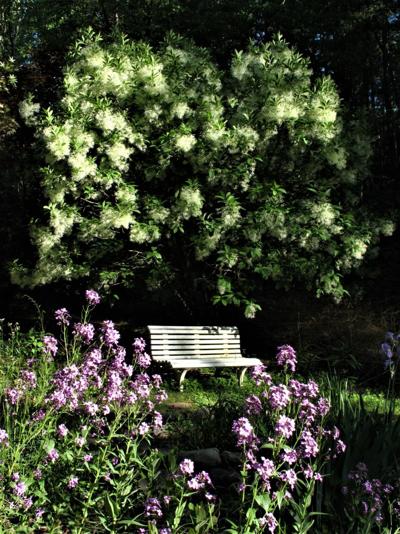Nature News | Marlene A. Condon January 1, 2022

New Year’s Resolutions To Help Wildlife
This year, how about making some New Year’s resolutions to help wildlife? Please consider the following options when managing your property.
Limit the amount of lawn around your home. A lawn doesn’t provide as much to wildlife as a variety of herbaceous plants, shrubs and trees. And people’s desire to keep it weed-free (pesticides), dark green (fertilizers) and short (lawn mowers and weed-eaters) creates pollution in the environment.
Plant more trees, shrubs, vines, wild grasses and/or flowers. Learn about plants that are beneficial to wildlife and grow them to provide food and shelter for animals — and beauty for you!
Learn about wildlife so you will be less afraid and more willing to share your property with it. Knowledge goes a long way to reducing prejudice and fear. For example, many people are terrified of snakes and spiders for no real reason and tend to kill these animals on sight, but it’s a shame to take a life when there’s no substantial cause for doing so. Learn about snakes and spiders to understand the role they play in our world and how tiny a threat they pose to humans.
Let some “weeds” grow. Wild plants are typically considered “weeds,” but many produce beautiful flowers that are also useful to our native animals. If such plants come up in a spot where you can let them grow to maturity, you can broaden your knowledge of plants by identifying them and watching which animals make use of them.
Let your flowers go to seed and leave them standing throughout the fall and winter and into the spring. Allowing seedheads to remain on your annuals and perennials is an easy way to provide food for birds and small mammals. It also allows your plants to possibly reseed themselves, saving you some gardening effort in the spring. Chop up the dried stalks and leave them where they fall as the growing season begins. The stalks will decompose and add nutrients to the soil, reducing your need for fertilizer.
If you can, provide water for wildlife. This can be as simple as placing a dish of fresh water out daily for drinking purposes (if the dish is less than two inches deep, birds will also bathe in it). Or you can install an artificial pond that will provide an egg-laying site (and maybe a home) for frogs, toads, salamanders, newts, dragonflies and many other kinds of insects. Even a pond as small as three feet by four feet will be home to many, many animals.
Keep your pets (cats and dogs) restrained so they cannot kill wildlife. Pets take a huge toll on all kinds of wildlife, either directly by killing or indirectly by changing an animal’s behavior (such as preventing an adult bird from returning to her nest of eggs).
It is becoming ever harder for wild animals, and even some plants, to coexist with us. I hope that you will do whatever you can to accommodate our wildlife.
Thank you, and Happy New Year!
